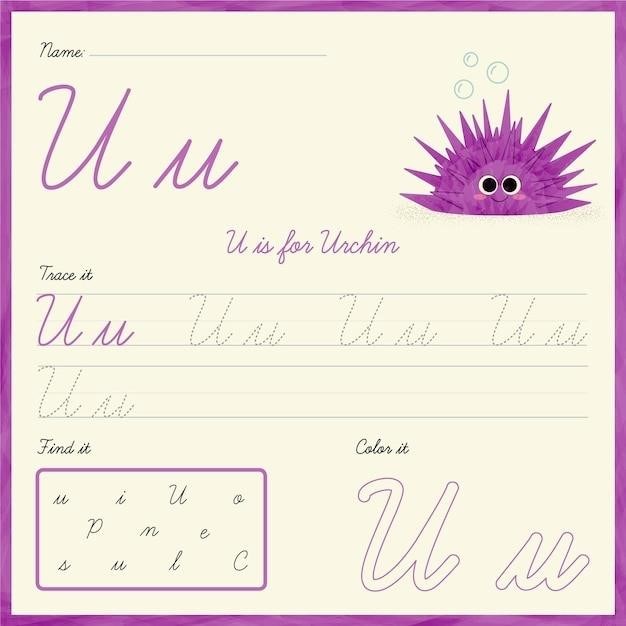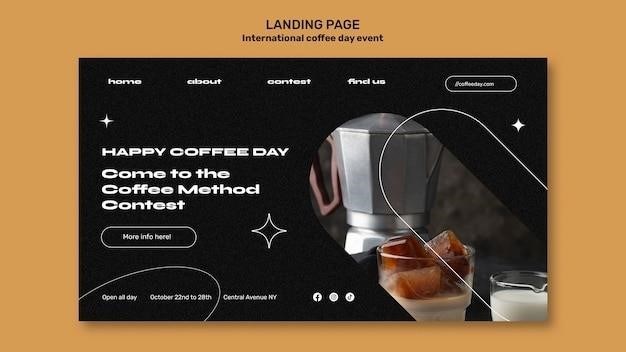Learning to play “Für Elise” is a popular choice for piano beginners, and using sheet music with letters can make it easier. This type of sheet music replaces traditional musical notation with letter names, making it more accessible for those unfamiliar with standard notation. You can find free PDF versions of “Für Elise” sheet music with letters online, often designed specifically for beginners.
Introduction
Embarking on a musical journey often begins with the desire to play beloved melodies. “Für Elise,” Ludwig van Beethoven’s enchanting piano piece, holds a special place in the hearts of many, making it a popular choice for aspiring pianists. Learning this iconic piece can be a rewarding experience, particularly for beginners. This guide will delve into the realm of “Für Elise” sheet music tailored specifically for those just starting their piano adventure. We’ll explore the benefits of sheet music featuring letters, providing a friendly and accessible approach to understanding and playing this timeless composition.
For those unfamiliar with traditional musical notation, the use of letters instead of notes can be a game-changer. Letter notation simplifies the process of reading and interpreting sheet music, making it less daunting for beginners. This approach allows individuals to focus on the melody and rhythm without being overwhelmed by the intricacies of conventional music notation. As you progress in your piano journey, you can gradually transition to standard notation, building a solid foundation in music reading.
Whether you’re a complete novice or have some prior piano experience, “Für Elise” with letter notation offers a welcoming gateway to the world of classical music. It provides a stepping stone to mastering more complex pieces, fostering a sense of accomplishment and encouraging continued musical exploration. Get ready to dive into the world of “Für Elise” and unlock the joy of playing this beloved masterpiece on the piano.
Finding Free Sheet Music
The internet offers a treasure trove of free resources for aspiring musicians, including “Für Elise” sheet music with letters. Numerous websites cater specifically to beginners, providing downloadable PDFs designed for easy learning. These resources often come with additional features, such as tutorial videos, practice tips, and even interactive online piano keyboards.
When searching for free sheet music, it’s essential to use specific keywords to narrow down your results. For example, searching for “Für Elise beginner sheet music letters PDF” will lead you to websites offering precisely what you’re looking for. Be sure to check the source of the sheet music and ensure it comes from reputable websites known for quality and accuracy. Websites dedicated to music education, online music stores, and even personal blogs often offer free sheet music for beginners.
Once you’ve found suitable sheet music, it’s a good practice to print it out. Having a physical copy allows you to mark notes, practice with ease, and even create your own personal annotations for future reference. Consider using a high-quality printer to ensure that the notes are clear and legible for optimal practice sessions. Remember, the more accessible and user-friendly the sheet music, the smoother your learning experience will be.
Easy Versions for Beginners
While “Für Elise” is considered a relatively simple piece, even beginners can benefit from simplified versions tailored to their skill level. Many websites offer “Für Elise” sheet music with letters specifically designed for absolute beginners. These versions often focus on the core melody, using a limited range of notes and simplifying the rhythm.
Learning “Für Elise” in an easy arrangement provides a sense of accomplishment early on, motivating beginners to continue their musical journey. It also helps build a solid foundation in basic music theory, rhythm, and note recognition. As beginners progress, they can gradually transition to more complex arrangements, gradually expanding their musical vocabulary and technical skills.
The beauty of easy versions lies in their accessibility and gradual learning curve. They allow beginners to experience the joy of playing “Für Elise” without feeling overwhelmed by complex notation or challenging fingerwork; These versions are stepping stones to mastering the original piece, ensuring a smooth and enjoyable learning experience for aspiring pianists.
Understanding the Notes
Before diving into playing “Für Elise” using letter notation, it’s essential to grasp the basic notes used in the piece. “Für Elise” primarily utilizes notes within a limited range, making it ideal for beginners. The most common notes include C, D, E, F, G, A, and B, each corresponding to a specific key on the piano.
Understanding the relationship between these notes and their positions on the keyboard is crucial for accurately playing the melody. “Für Elise” sheet music with letters will typically use these letter names to represent the notes, simplifying the reading process for beginners. Familiarizing yourself with the location of these notes on the piano will help you translate the letter notation into physical keystrokes, making the learning process smoother and more enjoyable.
It’s beneficial to practice identifying these notes on the piano before attempting to play the piece. This can be done by playing individual notes, matching them to their letter names, and gradually working towards playing short sequences. This foundation in note recognition will empower you to confidently navigate “Für Elise” sheet music with letters, effectively translating the written notes into musical sound.
Learning the Melody
Once you’ve grasped the basic notes in “Für Elise,” it’s time to tackle the melody. The melody is the heart of the piece, and learning it is the first step towards playing the complete song. Start by focusing on one section at a time, breaking down the melody into manageable chunks. Sheet music with letters will guide you through this process, presenting the notes in a clear and easy-to-follow format.
Begin by practicing the notes individually, ensuring you’re hitting the correct keys and producing the desired sound. Once comfortable with the individual notes, practice playing them in sequence, gradually increasing the speed as you become more confident. Pay attention to the rhythm, ensuring you’re playing the notes at the correct tempo. Use a metronome or a pre-recorded version of the piece to help you maintain a consistent beat.
As you progress, you’ll start to hear the familiar melody emerge. Take your time, focus on accuracy and rhythm, and don’t be afraid to repeat sections until you’re comfortable. Remember, practice makes perfect, and with each repetition, you’ll solidify your understanding of the melody and improve your overall playing. The satisfaction of successfully playing this beloved piece will be well worth the effort invested.
Playing with Letters
Sheet music with letters offers a simplified approach for beginners, replacing traditional musical notation with familiar alphabetical characters. Instead of deciphering complex symbols, you can learn to play “Für Elise” by recognizing the letter names of the notes. This method is particularly helpful for those new to music, as it eliminates the need to learn a new system of notation.
Imagine the sheet music as a map guiding your fingers across the keyboard. Each letter represents a specific key, and the order of the letters indicates the sequence of notes in the melody. For instance, “C” might correspond to the middle C key, “D” to the key to its right, and so on. This direct association between letters and keys makes it easier to visualize and play the music.
While using letters simplifies the initial learning process, it’s crucial to remember that this method is a stepping stone. As you progress, transitioning to standard musical notation will open up a wider range of musical possibilities. However, for beginners, sheet music with letters provides a friendly and accessible introduction to the world of piano playing, allowing you to experience the joy of music without the initial complexities of standard notation.
Using a Keyboard or Piano
Whether you choose a keyboard or a piano, both instruments can be used effectively with letter-based sheet music for “Für Elise”. A keyboard, often more compact and affordable, features a standard layout of keys, making it ideal for beginners. The keys are arranged in a familiar pattern, similar to a piano, with black and white keys representing different notes.
A piano, while larger and typically more expensive, offers a richer and more complex sound. It’s known for its full-bodied tones and dynamic range. While both instruments can be used with letter-based sheet music, a piano might provide a more immersive experience for those seeking a more traditional sound.
Ultimately, the choice between a keyboard and a piano depends on your individual preferences and budget. Both instruments can be used effectively to learn “Für Elise” using letter-based sheet music. The important thing is to choose an instrument that you enjoy playing and that fits your learning style. Whether you opt for the practicality of a keyboard or the richness of a piano, letter-based sheet music can be a helpful tool to guide you through the melodies of “Für Elise” and unlock the joy of playing music.
Practice Tips for Beginners
Consistently practicing is crucial for mastering “Für Elise,” and with letter-based sheet music, even beginners can make progress. Start by breaking down the piece into smaller sections, focusing on one hand at a time. This allows you to build a solid foundation for each hand’s part before combining them.
Practice slowly and with accuracy, ensuring each note is played correctly. As you become more comfortable, gradually increase the tempo. Don’t be afraid to repeat sections until you feel confident. Remember that patience is key. Learning a new piece takes time and effort.
Listen to recordings of “Für Elise” to familiarize yourself with the melody and rhythm. This helps you develop a better understanding of the piece’s musical phrasing and dynamics. You can find numerous recordings online, both by professional musicians and amateur pianists.
Don’t hesitate to take breaks during practice sessions; Your fingers and brain need time to rest and absorb the information. Practice in short bursts, focusing on quality over quantity. Remember, consistent practice, even in small increments, leads to significant improvement over time.
Online Resources for Beginners
The internet offers a treasure trove of resources for beginner pianists tackling “Für Elise.” Websites like “MakingMusicFun.net” provide free, printable sheet music in PDF format, specifically tailored for beginners using letter notation. These versions often include additional features like practice tips and tutorials, making them ideal for self-guided learning.
Online platforms like “Scribd” offer a vast collection of sheet music, including “Für Elise” versions with letter notations. Many of these resources provide detailed instructions for playing the piece, catering to the needs of beginners. You can also find websites dedicated to sheet music with letter notation, offering a wide range of classical and contemporary pieces for beginners.
YouTube is another valuable resource. Numerous channels provide “Für Elise” tutorials designed for beginners using letter notation. These tutorials often feature visual representations of finger placement and clear explanations of musical concepts, making learning more interactive and engaging. Many channels also offer practice tips and advice for beginners.
Beyond websites and videos, online communities dedicated to piano learning can be a great source of support and inspiration. These communities often offer forums for sharing experiences, asking questions, and connecting with other beginners. Joining such a community can provide a sense of belonging and encourage continued practice.
Additional Resources
Beyond online resources, there are various supplementary materials that can enhance your “Für Elise” learning journey. Consider exploring piano method books designed for beginners. These books often include simplified arrangements of popular classical pieces, including “Für Elise,” along with explanations of basic music theory and finger techniques. They can provide a structured approach to learning, building a solid foundation for your piano skills.
Another valuable resource is a piano teacher. While online resources offer convenient access to learning materials, a teacher provides personalized guidance and feedback. They can identify areas where you need extra practice, address specific challenges you might face, and offer encouragement along the way. A teacher can also help you develop proper posture and technique, ensuring you build healthy habits from the start.
If you have access to a local music store, inquire about piano learning resources available in their shop. They may offer sheet music collections specifically for beginners, as well as instructional videos and DVDs. Some stores may even offer introductory piano lessons, providing a chance to experience the benefits of learning with a teacher before committing to a full program.
Remember, the key to success in learning piano is consistent practice and a positive attitude. Embrace the learning process, celebrate your progress, and enjoy the journey of mastering this beloved classical piece.

Learning to play “Für Elise” using sheet music with letters can be a rewarding experience for piano beginners. It provides a simplified and accessible entry point to the world of music notation, allowing you to grasp the fundamentals of playing a melody on the piano. The use of letter names familiarizes you with the keyboard layout, making it easier to locate the correct keys. This approach can be particularly helpful for those who are new to reading traditional musical notation.
As you progress in your learning, you might find yourself eager to explore more advanced sheet music. At this point, you can gradually transition to learning standard musical notation, building on the foundation you established with letter-based sheet music. Remember that the journey of learning piano is about continuous growth and exploration. Embrace the challenges, celebrate your milestones, and enjoy the satisfaction of making music on the piano.
Whether you continue with letter-based sheet music or move on to traditional notation, the experience of learning “Für Elise” will likely inspire you to explore other pieces and expand your musical repertoire. It’s a classic piece that has touched countless hearts, and playing it yourself can bring a sense of accomplishment and joy.
Further Exploration
After mastering “Für Elise” using letter-based sheet music, you can delve deeper into the world of piano playing and explore a wide range of other beginner-friendly pieces. Many popular classical melodies, like “Minuet in G” or “Twinkle Twinkle Little Star,” are available in simplified versions with letters. This allows you to expand your musical knowledge while enjoying familiar tunes.
Consider exploring other genres beyond classical music. There are countless resources for learning popular songs on the piano, often using letter notation. From pop hits to folk classics, there’s a world of music waiting to be discovered. Exploring different styles will broaden your musical horizons and introduce you to new techniques and rhythms.
As you progress, you might want to venture into the world of standard musical notation. Many online resources and piano instruction books offer beginner-friendly approaches to learning traditional notation. This will open up even more possibilities for playing a diverse range of musical compositions.
Remember, learning to play the piano is a journey of discovery. Enjoy the process, embrace the challenges, and celebrate your musical achievements. The world of music is vast and exciting, and there’s always something new to learn and explore.





